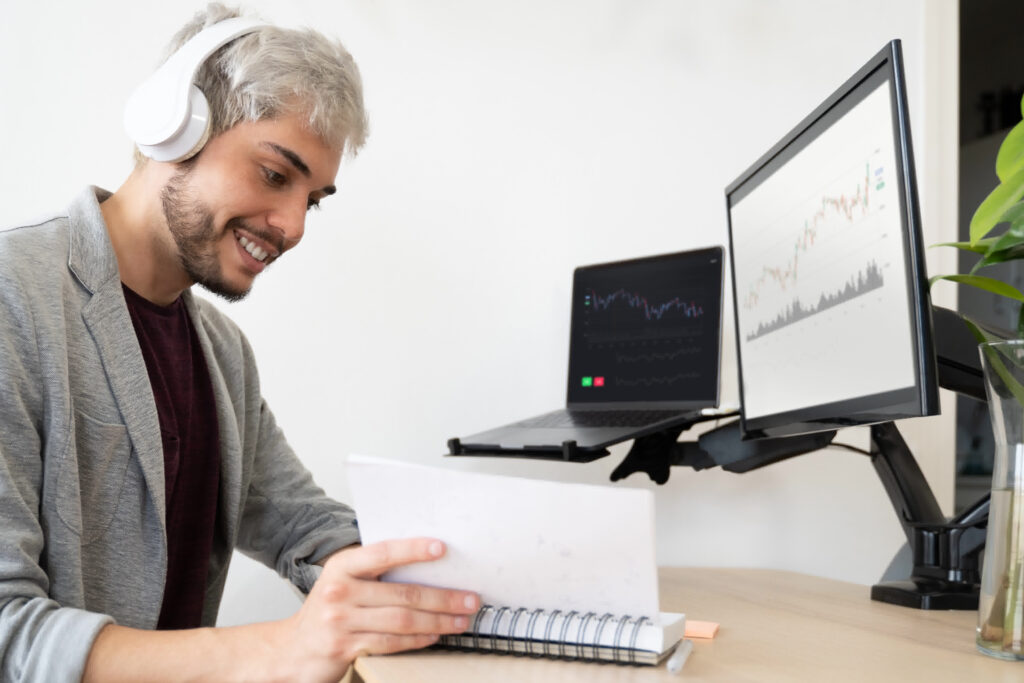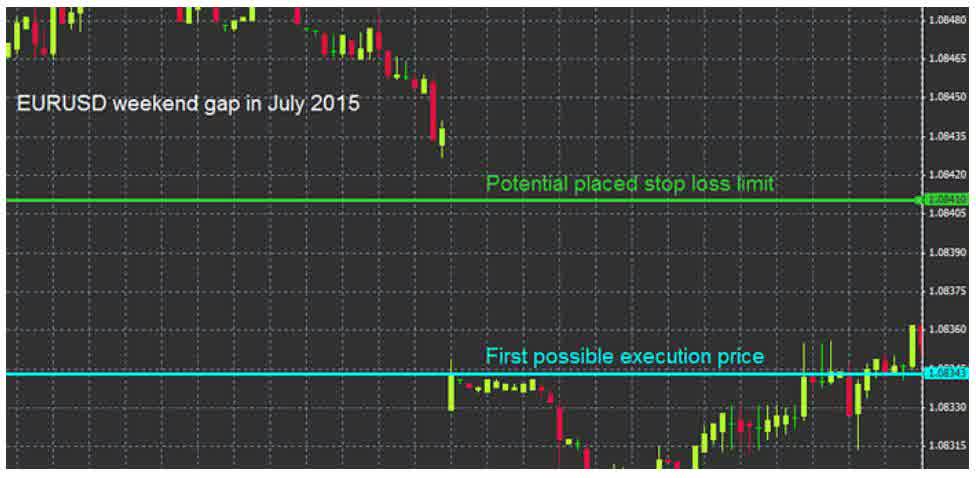Risk Management for Forex and CFD Trading

Learn the best risk management practices for successful Forex and CFD trading.
In order to trade Forex and CFDs, leverage is needed, and it can greatly multiply your profits. Due to the risk associated with leverage, though, your losses can be significantly increased too. The higher the potential profit, the greater the risk, so it is a prerequisite for your subsequent trading to understand the risks of leveraged trading. Your guide to Risk Management for Forex and CFD Trading.
As we said, Forex trading does have high risk. Thankfully, in many ways, you can lessen this.
This article will guide you through the basics of applying risk management strategies. Please note that this is not financial advice, and we are merely providing an informative resource for you to educate yourself on this topic further.
What Does Risk Management Mean?
General trading risks
Your profit opportunities are always closely correlated to market risk.
Think of risk management as a package of assets and activities that you can use to keep your losses low and potentially increase your profits.
Risk management in Forex trading is based on the following four fundamentals:
- Identifying the risks of Forex
- The analysis and assessment of these risks
- Solving ways to reduce the level of risk
- Consistently using these solutions with careful management and consistent utility
Examining markets is a priority for both novice and experienced traders alike. Finding a good market “entry” is vital. However, this doesn’t lessen the value of risk management has, for professional and new traders alike.
We also wrote an article about market risk specifically click HERE to read it
Leverage effect
Most people choose Forex and CFD trading because of the possibility of leverage. Why? Because with leverage, we’re going to have a much smaller margin requirement, with less capital – this helps produce a more significant profit margin.
REMEMBER; If the market doesn’t go your way, you could lose a lot more!
The more leverage you use, the faster you can win or lose. For example, there is a chance that you could choose leverage higher than you can handle. If this were to happen, it could cause you to no longer manage your assets sufficiently, potentially causing losses. Less leverage can be an attractive option to reduce your risks, but, at the same time, any potential profits would deflate because of it. Therefore, it is worth carefully considering the degree of leverage you have.

Incorrect market valuation
Trading Forex pairs, CFDs begins by deducting spread costs (difference in buy and sell price). Immediately after opening the position, there will be a negative value in your profit column. You should be aware that your trade will not always be profitable. It doesn’t matter how much you lose. To keep losses within reasonable limits, you should set a stop loss. However, remember that setting the “stop-loss” too narrow will mean your position may be closed even with minimal market movements.
Remember, not all positions will close in the green (profitably).
Rapid market movements
The market continuously moves because of news, opinions, trends, and political decisions.
For example:
- Suppose a central bank announces that it is changing the interest rate. In that case, this suddenly causes considerable movements in the markets, and significant gaps (breaks) in the exchange rate may appear very quickly.
- A prominent market participant may intentionally cause market ‘pain’, generating a significant downward shift by liquidating specific, more prominent positions.
Sometimes there may be unexpected market movements. Even if you feel like you are constantly watching what is happening, you can never know precisely what will happen in the next few minutes.
What do we suggest for that?
You may want to use automatic tool systems, such as stop-loss and take profit parameters, to close your positions on time for you. However, it is essential to know that inputting a stop loss does not promise to eradicate the possibility of loss completely; it can only limit how much loss you can suffer.
Market gaps
Suddenly the exchange rate jumps, which is clearly evident on the chart.
A gap usually occurs after the market closes, but there are situations when the exchange rate reacts to unexpected economic news or events in the case of an open market.
Why is this important? If such an open market gap is created, the set stop loss and take profit levels will only be executed with the closest exchange rate available. An example on the EUR/USD graph:
- An unusually large weekend gap emerged on this chart
- There is no bid/ask within the gap, which means that the stop loss placed is only triggered at the nearest exchange rate after the gap.

The presented gap on the chart shows a negative slide in Forex Trading rules. But, of course, there is also an example where slippage can result in a higher return for the client, since the profit taking has been achieved in a more favourable place.
Risk management tools
Stop loss – know your limits
Prices can move very quickly, especially if the market in a period of volatility or nervousness. Therefore, a well-placed stop loss “reacts” much faster than any manual trader would be able to react, making it one of your most serious risk management tools.
Countless articles and articles have been written about choosing the proper stop loss, but there is no golden rule that can apply to all traders and their different trades. The appropriate stop loss location for each trade must be determined separately by answering the following questions.
- What is your trading timeline (just know – for a longer-term position, there may be more volatility)?
- What is the target price, and when can we expect to reach it?
- What type of account do I have, and what balance do I have on my current account?
- Do I currently have any open positions in the market?
- Is my position size appropriate for my account size, balance, trading timeline, and market situation?
- What is the general market sentiment (volatility, liquidity, news, external factors)?
- How long is the market open (e.g. is the weekend is approaching or when will the market closing be happening in the evening)?
Since there is no general rule on setting up a stop-loss, we recommend using a free demo account so that you can learn to get to grips with proper implementation without any real risk happening to you. Here are some trading examples of different stop loss uses. If you have a real account, you can use MT4’s extended trading features in the same way, which displays the risks associated with each stop loss in the specified currency.

Position size
Even the best of traders can experience non-profitable positions. For example, ending with 5-8 out of 10 trades positive is considered a successful ratio in Forex Trading. Therefore, a well-chosen position size is critical to get through any market movement.
Select leverage
As you already know, too much leverage can increase your risk, and even a few negative trades can ruin your good results. So, we want to remind you:
- To choose the right level of Forex leverage for you, and don’t get in over your head.
- use our trading calculator in MT4 Supreme or on our website to see different trading situations, which will help you later choose the right position size for your live trading.
External factors
Keep in mind that several external factors can affect your trading strategy on Forex. Such factors:
- power outage and/or internet connection problem
- you are busy or hijacked by office work.
Try our trading calculator to practice different trade scenarios.
(Try the trading calculator)
Be aware of the picture as a whole
Forex and CFD trading can provide substantial profit opportunities when buying or selling. But remember, it can also cause losses if you don’t practice and learn risk management. Identify your weaknesses and manage them. This will be what will help control your losses – even if you have 8-10 winning trades, just one single losing trade can absorb all of those profits.
We know that the psychological factor in a loss-making trade can discourage many novice traders. But it is essential to understand that loss is part of trading. So, before you start your first live trade, understand:
- Losses are inevitable
- And know how to process them psychologically before they happen.
This guide is intended to facilitate the trader’s risk management with descriptions and examples. As well as what tips we offer, we ask that you do these two things:
- Keep this fundamental information in mind as you improve your personal risk management strategy
- Understand that the information we have provided here will only help you to limit your losses – it will not solve them.
But listen, remember, Forex and CFD trading isn’t Heaven and Hell itself. You can significantly improve your profit/loss ratio for successful trading by selecting the correct risk management methods and applying them consistently.
You can try Forex trading risk free with a demo account. There are many brokers out there that we could recommend, one of which being Etoro.
Read more from Us

